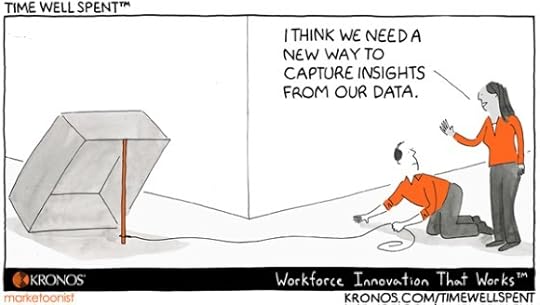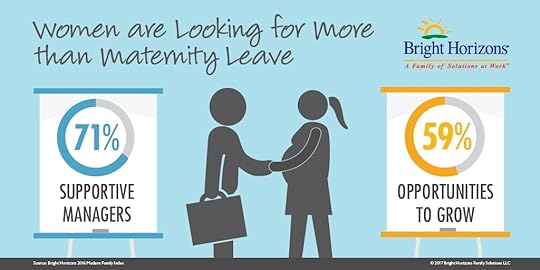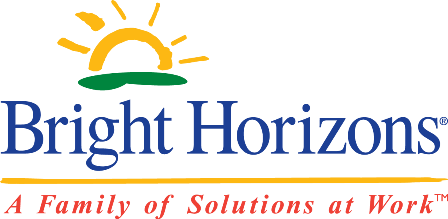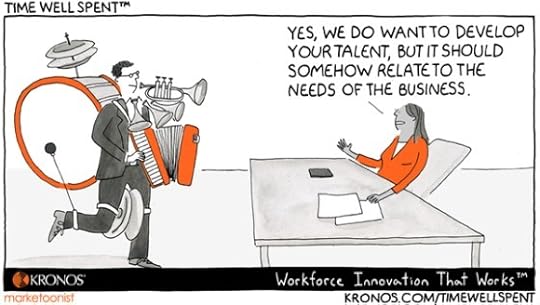Sharlyn J. Lauby's Blog, page 138
April 28, 2017
Quick Shots for #Recruiting Pros and #JobSeekers – Job References Edition
Just because it’s a candidate driven market doesn’t mean job seekers are always steering the conversation. Take job references for example. I’ve been getting a lot of questions lately about them. Here’s the latest:
Hello. I’ve had two interviews with a company. A couple of weeks ago, the manager asked for my references and I provided them. All of my references have confirmed that they spoke with the company but I haven’t heard anything yet. When is it appropriate to follow-up?
One of the most difficult and frustrating things for candidates is the waiting after a job interview. It’s so hard to try to second guess the company. And for that reason, I’d suggest not trying to. But there are some things that everyone should try to remember when it comes to job references.
First of all, job references are used for more than getting a job. They can help secure board positions or be used in business proposals.
And there are legalities when it comes to the proper requesting and use of job references. Whether you’re a recruiter or a job seeker, it’s important to have at least a little understanding of the law.
Selecting the best job references makes a difference. Check out this expert advice from Jacqui Barrett-Poindexter on how to select and use them.
A huge mistake is letting your job references get out of date. If that happens to you, here’s how you fix it.
If you’re wondering if your company is obligated to write a reference letter for you, attorney Jonathan Segal gives us the answer.
And I purposely saved this one for last. Recruiting experts Lars Schmidt and Chris Fields answer the question: does providing references mean you’ve got the job?
Job references are a tricky thing. They do more than get you a job, so you should always have them ready. And providing them doesn’t always mean you’ve got the job. I wish I could say that there’s one sure way to respond. Unfortunately, there’s not. Follow-up in a way that you are comfortable with.
Image captured by Sharlyn Lauby just before exiting reality in South Florida
The post Quick Shots for #Recruiting Pros and #JobSeekers – Job References Edition appeared first on hr bartender.






April 27, 2017
8 Steps to Becoming a Lifelong Learner
I know the term lifelong learner has become a little stale. Some people are calling it “self-learning”. Regardless of what you call it, the concept is important. We must continuously learn to remain physically healthy and professionally relevant.
Becoming a lifelong learner takes planning and discipline. I tend to think of it as a practice, similar to mindfulness or an exercise program like Pilates. It’s something I’m constantly working on and getting a little better every day. If you’re trying to create a personal learning practice, here are 8 things to consider:
Admit how you like to learn. There are three primary ways people learn something – auditory, visual, and kinesthetic. It’s important to know your preferred learning style. And that it might be different at times. For example, when it comes to cooking, I’m a hands-on learner. But if it’s a theory, I prefer auditory or visual.
Realize there’s a difference between what you want to learn and what you need to learn. This is especially true when it comes to our careers. There may be lots of things we want to know, but what are the new knowledge and skills that will help us accomplish our goals or get us the promotion we want.
Create a learning bucket list. Speaking of wants and needs, find a process that you’re comfortable with for prioritizing learning. You don’t want to take on too many things at once. It will ultimately impact the thing you’re learning at the moment. Create your own list of skills that you want to learn.
Look for learning buddies. IMHO, over half of learning is enjoying the experience. There’s no rule that says self-learning must be done alone. Lifelong learners might find an occasional group meeting to share stories is helpful and valuable to the process.
Discover new and fun ways to learn things. Today’s technology allows us to learn in ways we could have never imagined. I just discovered that, if I wanted to take a cooking class with famous “shouty” Chef Gordon Ramsay, I can. Or I can learn how to code using Apple’s Swift Playgrounds app. Learning doesn’t have to be boring.
Connect with good sources for learning opportunities. The second thing that technology brings to the learning space is new sources. The good news is there are lots of smart, talented people we can learn from. The hard part is sifting through all of the noise to find them. Maybe our learning buddies (#4) can help.
Schedule time for learning. Block off time on your calendar for learning. I do not have to tell anyone what will happen if you postpone learning to when you have nothing else to do. Make learning a priority and it will happen. So, schedule an appointment with yourself to learn. You deserve it.
Regularly reflect on your takeaways. Learning should have a purpose. When you decided that you wanted to learn something, there was a reason. Reflect on your learning experience. Ask yourself, “Am I getting out of the learning experience what I hoped?” And if necessary, make adjustments.
Your age and position have nothing to do with being a lifelong learner. We will never know it all. The best way to manage learning is by developing a personal process of learning because you’re going to be doing it for a long time.
Image captured by Sharlyn Lauby after attending the Great Place to Work Conference in Austin, TX
The post 8 Steps to Becoming a Lifelong Learner appeared first on hr bartender.






April 25, 2017
The 10 Basic Skills that Every Manager Should Have
There are many skills that managers can learn on the job. For example, they can learn how to approve time cards, the key elements in an employment law, or the steps in conducting a good interview. But there are some basic skills or qualities that organizations want to see in managers from day one.
So, if you’re an HR professional trying to communicate expectations for the management team, this list might be helpful. Or, if you’re an individual who wants to eventually become a manager, think about building on these basic skills:
Verbal communication. First and foremost, managers are coaches. They provide feedback to employees, conduct training, and offer performance guidance. As such, they need to be able to effectively hold a two-way conversation.
Asking questions. I’m viewing this a little differently than problem-solving. I believe you can teach someone a problem-solving model. Managers need to be curious and willing to ask questions (versus assuming an answer). They also need to be open to letting others know when they don’t know something.
Listening. I didn’t want to lump this in with verbal communication (#1) because it’s too important. This is also part of asking questions (#2). Coworkers are okay with a little silence. The best managers know when to stop talking and listen. They also know how to listen effectively.
Time management. When managers have too many projects and not enough time, they are forced to prioritize their work. That’s not necessarily a bad thing, except if employees become a low priority. Managers must be able to manage their time and still accomplish their goals – while supporting the needs of their employees.
Decision making. Speaking of prioritizing, the only way to do it effectively involves good decision making. Managers should be able to look at a situation and make an assessment about what do to. If they need additional information to make the decision, they can use skills #1, #2, and #3 to get what they need.
Customer service. Managers have multiple customers – both internal and external ones. They need to understand who their customers are, what they want, and how to engage them. This will be critical for effective time management and decision making.
Thinking. What I mean by this is managers know when to go “big picture” and when to focus on details – or both. Again, these basic skills do have a certain amount of connectivity. Good decision making involves knowing when you have the right amount of information – which will be very different – depending on your thinking.
Stress management. We can’t tell others how to manage their stress. But how we manage our own stress impacts others. Managers need to be able to recognize and manage their own stress levels. And demonstrate a certain amount of calmness for the team.
Conflict management. Managers should be able to address conflict both in terms of helping others resolve their conflicts AND being willing to defend their position, even if that means disagreeing with their boss or colleagues. They need to know how to mediate as well as manage workplace conflict.
Written communication. Online collaboration and recognition tools make it easy to communicate with employees. But like email, it’s hard to read inflection and emotion. Managers need to have good writing skills so their words will be understood and interpreted correctly.
These are the 10 basic skills that every manager needsClick To Tweet
Organizations place a lot of responsibilities on their managers. It’s important to clearly state the expectations of the role. Employees who want to be promoted into a manager position need to understand the basic skills they should demonstrate – and why they need to have them. The more open and transparent organizations are about skills, the more opportunities they can create for employees to develop them.
Image captured by Sharlyn Lauby after speaking at the SHRM Annual Conference in Las Vegas, NV
The post The 10 Basic Skills that Every Manager Should Have appeared first on hr bartender.






April 23, 2017
The Business Benefits of Mindful Leadership
I’d like to think that everyone understands the importance of leadership. And good leadership benefits organizations. But there’s not one standardized type of leadership. It takes on many forms and, as individuals, we might be attracted to certain types and models more than others. Personally, I think that’s okay. The important piece is that individuals find a way to practice leadership that feels authentic to them. Because if they embrace it, they will do it. And that’s what benefits the business.
I’m really looking forward to attending this year’s WorkHuman Conference because one of the speakers, Pandit Dasa, a mindfulness expert and former monk, is speaking on mindful leadership. Pandit has spoken in several Fortune 500 companies and is the founder of Conscious Living, a consultancy focused on bringing mindfulness and wellness to the workplace. He’s also the author of the book, “Urban Monk”.
Regular readers of this blog know I’ve become fascinated with mindfulness and have written a few pieces about the practice. Pandit was generous to share his time with me and provide a sneak peek into mindful leadership.
Pandit, how do you define “mindful leadership”?
 [Dasa] Many people today operate within a leadership capacity, not just the C-Suite. Everything a person does influences others. Those who are specifically in leadership roles need to understand if and when their actions are the result of their ego and personal needs. Mindful leaders are trained in managing their egos and not letting them get in the way of the company’s success.
[Dasa] Many people today operate within a leadership capacity, not just the C-Suite. Everything a person does influences others. Those who are specifically in leadership roles need to understand if and when their actions are the result of their ego and personal needs. Mindful leaders are trained in managing their egos and not letting them get in the way of the company’s success.
When it comes to leadership, I take my inspiration from people like Martin Luther King, Jr., Nelson Mandela, and Gandhi. They were individuals who led by example and lived by the saying, “Be the change you want to see.” Leadership is about being willing to set the example.
Now, when we think of mindfulness, it’s about being aware and in the moment. Bring those two concepts together. Mindful leadership is about being aware of your motivation and the reasons you choose to lead. It’s about asking yourself: Why am I choosing to be a leader? Am I serving my needs or the needs of others? How am I treating others as I go about meeting the goals of the organization?
I saw in the program description for your WorkHuman session that you plan to discuss “putting people over project”. I think maintaining this balance is a challenge that leaders face daily – to the point where it creates stress and burnout.
[Dasa] When leaders are faced with multiple demands, here are three things they can do to alleviate personal stress and burnout.
Practice mindfulness/meditation. It’s amazing how taking a few moments to decompress and focus can have so much impact on our state of mind and energy. Make time for this daily. While research says that a 15-20 minute is an ideal session that could be challenging for someone who is new to meditation. I’d suggest starting with 5 minutes/daily for 30 days. Everyone has 5 minutes a day. Use the time to focus on clearing your mind, taking deep breaths, feeling grateful for the positive things happening in your life, and appreciating your colleague’s contributions. The time will fly by. After a month, just add a minute. Work up to a time that’s comfortable for you.
Focus on relationships. According to The American Institute of Stress, forty-six percent (46%) of our stress is related to workload, and 28 percent is people issues. When we get stressed, the most helpful thing is having positive relationships around us. Whether it’s in your personal or professional life, if you have a difficult relationship, try to resolve any conflict and tensions. Ignoring it isn’t going to help. Resolving conflicts generally means we need to be proactive because conflicts won’t resolve themselves. We will need to take a humble approach by being ready to acknowledge our contribution to the conflict.
Get a good night’s sleep. With advances in technology, we can find ourselves constantly planning. Our devices keep us connected, so we’re always thinking about the next thing we need to do, and frankly, we’re letting it interrupt our rest. Take time to truly disconnect. Put away the phone, so you’re not tempted to check your emails in the middle of the night. The work will still be there in the morning. You’ll be so much fresher in the morning and ready to deal with whatever is waiting for you.
When it comes to work, how can mindful leaders hold people accountable and still meet their business goals?
[Dasa] A mindful leader won’t simply blame others if the goals aren’t met. They will take an honest look at themselves and see if they did everything possible in their power to help their workforce succeed. Did they:
Set clear expectations and communicate them effectively?
Make sure expectations were reasonable and achievable?
Understand the knowledge, skills, and abilities of the team before assigning tasks?
Provide sufficient empowerment and support so the team can achieve their agreed upon goals?
Monitor the situation and address any emergencies before they get out of control?
Mindful leaders don’t just hold others accountable, but they do the same with themselves.
Speaking of communication, I’ve been told that positive messages are easy to share and not-so-positive messages…well, are more difficult. What can mindful leaders do when they need to communicate the difficult message. For example, like when project needs aren’t met?
[Dasa] It is important to regularly appreciate the contributions of your workforce. This creates a positive emotion balance in the relationship. When there has been a sufficient expression of appreciation, it becomes easier for the recipient to hear the not-so-positive messages.
The monks that I lived with for 15 years taught me that the ideal communication covers four criteria:
It is truthful.
It is beneficial.
It doesn’t disturb the other’s mind.
It is pleasing.
While it may not always be possible to meet all four criteria, we can try and be more thoughtful and compassionate in not only what we communicate, but also how we communicate. Ultimately, the goal of our communication should be to inspire the individual to do and give more. An uninspired worker is not going to be very productive.
If an organization encourages mindful leadership, how can they measure the results of their efforts?
[Dasa] Mindful leadership is a transformation in the way we think and behave. It requires commitment, training, and work. Individuals need to evaluate their emotions and become more self-aware. Think of it like running a marathon. You don’t become a marathon runner overnight. It takes time to train. You take small steps every day. Then, once you get into your routine, it progresses quickly.
The organization will know that mindful leadership is working through greater retention. Because leaders are thinking of others. Individuals are happier at work. They’re being recognized for their efforts.
There’s a good read in Harvard Business Review titled, “Proof that Positive Work Cultures are More Productive”. I’d add happy to that title. When employees are happy, they’re productive. And when they’re productive, they will stay. People spend a lot of time at work. Positive interactions matter.
Mindful leaders don’t just hold others accountable. They do so with themselves.Click To Tweet
My thanks to Pandit for sharing his expertise with us. If you want to learn more about mindful leadership, check out this article on the Society for Human Management (SHRM) website about the business benefits of mindful leadership.
And consider joining us in Phoenix on May 30 – June 1 for WorkHuman 2017. Our friends at Globoforce have put together a fabulous line of speakers. Besides Pandit, the agenda includes Former First Lady Michelle Obama and Julia Louis-Dreyfus, star of the award-winning HBO series “Veep”. If you’d like to join us (and I hope you will), HR Bartender readers have been extended a discount. Just use the promo code WH17INF-MFA to receive the special rate of $995 (a savings of $500).
The post The Business Benefits of Mindful Leadership appeared first on hr bartender.






April 21, 2017
The Definition of Data Collection Insanity – Friday Distraction
There’s an often used quote attributed to Albert Einstein, “Insanity is doing the same thing over and over again and expecting different results.”
I was reminded of the quote when I saw this Time Well Spent from our friends at Kronos. While there are some cases where we can still gain insights from old data collection methods, we have to be careful that new information doesn’t remain hidden because we’re using old techniques. In addition, organizations might have to temper their expectations where timing is concerned. We can’t expect to gain new understanding at a faster or same pace using old data collection methods.

In today’s business world, organizations need data to remain competitive – both in terms of customers and talent. But that means organizations need to invest in their technology infrastructure that will allow for proper data collection. Here are a few things to consider:
Think short- and long- term. Building a data collection infrastructure doesn’t mean buying the biggest and best right away. Think about the organization’s need over time. Using a phased-in approach can allow the organization to create buy-in, adjust to change, and allocate resources efficiently.
Get comfortable with early adoption. It’s possible that at some point, the organization will need to consider new technology. There are times when it makes sense to wait until a technology is proven and other times will benefit from earlier participation.
Assume it’s a never-ending cycle. I know we’re not supposed to “assume” in business, but I think this one is a pretty safe assumption. Technology continues to evolve and organizations need to be prepared to evolve along with it. There’s a point where clinging to old infrastructure can be detrimental to the organization.
I enjoy plenty of old-school technologies. It’s hard to move from the comfortable way of doing things. In some cases, it can be expensive. Organizations that want to continue to move forward have to think about building a data collection infrastructure. Then plan for building another one when this one becomes dated.
The post The Definition of Data Collection Insanity – Friday Distraction appeared first on hr bartender.






April 20, 2017
Companies: When to Call a Labor and Employment Lawyer – Ask #HR Bartender
Last week, I wrote a post about when employees need to lawyer up or reach out to a government agency about something that’s happening at work. It occurred to me while I was writing the post that companies might want the same type of information.
I’ve worked at organizations that never called an employment lawyer because frankly, they didn’t want the expense. That often cost them more than if they would have paid for an hour of advice. On the flip side, I’ve worked places where we called an attorney for everything, which probably wasn’t absolutely necessary.
So I reached out to a couple of labor and employment attorneys to get their take on when organizations should consider engaging with an employment lawyer. Kate  Bischoff is an employment attorney and HR Consultant at tHRive Law & Consulting LLC. She’s helped us before with reader questions. One of my favorites is “HR Failed to Investigate an Incident”.
Bischoff is an employment attorney and HR Consultant at tHRive Law & Consulting LLC. She’s helped us before with reader questions. One of my favorites is “HR Failed to Investigate an Incident”.
Here’s what she had to say:
“Apart from when the government comes knocking or you receive a lawsuit, there are three times when you should turn to a lawyer:
When your tummy says, ‘something isn’t quite right’. It’s a tough termination, you’re not sure if all the Family and Medical Leave Act (FMLA) paperwork was just right, the employee in question is popular but in trouble, you got a strange call from a government agency. If you’ve ever heard an employment attorney at a seminar, you’ve seen us try to instill a sense of uneasiness in your belly. I call this Spidey sense. When your Spidey sense goes off – no matter what the scenario – give us a call.
When you’re going to try something ‘new’. Let’s say you’re going to try a new piece of HR tech (a new applicant tracking system (ATS) or using an analytic tool), change your structure (try your hand at holocracy), or roll out a new policy (parental or sick leave), make your employment lawyer buy you lunch. Your lawyer may flag some issues with the new proposal and give you some needed guidance that will reduce some risk (or even maybe make the roll out easier). We should even pay.
When you need to do an investigation or audit. If you have to look under the hood of your own practices or a complaint has been lodged, call us. We’re trained to test compliance and investigate potential wrongdoing. We also have some magic fairy dust called attorney-client privilege that can shield our work from government agencies and maybe even courts later. We can help find, remedy, and then protect your business.”
Heather Bussing is an employment lawyer and regular contributor at HR Examiner. She’s also helped us before here on the blog. I really like this post  about “Why Job References are Important”. Bussing reminds us the role attorneys can play in our business.
about “Why Job References are Important”. Bussing reminds us the role attorneys can play in our business.
“To ask the question is to answer it. If you even vaguely wonder if you should be talking to legal, please do. A good employment attorney can help you think through possible outcomes, clarify what makes sense for both the organization and the employee, and help you come up with the right strategy to handle the issue.
The goal is always to prevent problems rather than clean them up.
But understand that attorneys’ first instinct will usually be to reduce risk. That’s why, when you ask a lawyer if you can or should do something, the answer is often ‘no’. So, when you go to legal, and please go to legal, ask for their suggestions on how to handle it, what the options are, and the risks and benefits of each approach.
Then use your experience, judgment, and the great advice you just helped your attorney give you.”
Companies: When to Call an Employment LawyerClick To Tweet
A huge thanks to Heather and Kate for sharing their knowledge with us. As a human resources professional, I’ve worked with my fair share of attorneys. They are smart and always there to help us run our businesses well. But we can only take advantage of their knowledge and experience if we call them.
Image captured by Sharlyn Lauby after speaking at the 2016 SHRM Annual Conference in Washington, DC
The post Companies: When to Call a Labor and Employment Lawyer – Ask #HR Bartender appeared first on hr bartender.






April 18, 2017
Want to Retain Women Leaders? Look Beyond Maternity Leave
(Editor’s Note: Today’s post is sponsored by Bright Horizons Family Solutions , a leading provider of high-quality child care, early education, and work/life solutions for employers. They’ve been consistently included in FORTUNE Magazine’s 100 Best Companies to Work for in America. In addition, more than half of the employers on the FORTUNE list, including seven of the top ten, are Bright Horizons clients. Enjoy the post!)
Organizations need to focus their engagement and retention strategies toward women. And I’m not just saying that because I’m a woman. According to the U.S. Department of Labor, women represent 51.5 percent of all professional and managerial jobs. And a large percentage of these women are also working mothers. So, if businesses are saying to themselves, “Where can we have the most impact?”, it only seems logical and good business sense to consider the largest group.
That being said, organizations need to think beyond benefits like maternity leave when it comes to engaging and retaining women leaders. It’s true – announcements of enhancements to maternity leave policies are in the media almost every day. They are important and valuable and more organizations should offer them. But, if organizations want to retain working mothers and preserve their current and future leaders, they need to look beyond the first few weeks or months of a working mother’s life and really pay attention to the messages that are being sent throughout her tenure.
The Bright Horizons 2016 Modern Family Index shared some eye-opening statistics about working mothers and the work environment:
Parenting translates into a career-limiting move. Women have watched as their working parent colleagues are passed over for promotions and career opportunities. More than one-quarter (26 percent) of expectant mothers admit they’ve witnessed working parents at their organization being limited in their careers.
Commitment is high among expectant mothers. Women are committed to their careers and fear that having children will halt their career progression. Ninety-two percent (92%) of expectant mothers plan to be as committed post-baby as they were before, and the majority of them (some 53 percent) expect to work harder in order to earn more for their family.
Family friendly employers attract talent. If parents don’t like what they see in a workplace, they will exit your organization, not the workforce. Forty-nine percent (49%) of parents who’ve had their first child in the past two years indicated they would take a job for less money at a family-friendly employer.
Organizations need to recognize the potential challenges facing women leaders during this time of transition and create strategies that signal a continued investment in employees who are parents.
3 Strategies for Retaining Working Mothers
Women are becoming mothers later in life, often after they are well-established in their careers and in positions of management and leadership. As more companies – especially technology, science, and engineering industries – are struggling to meet diversity and inclusion goals, HR professionals should consider developing programs focused on retaining working mothers. Here are three strategies to consider:
Offer family friendly benefits and supports. In the Society for Human Resource Management’s (SHRM) 2016 Strategic Benefits Survey, the company benefit which saw the highest level of increase were family benefits, indicating an increased value for these benefits and supports with employees. Family benefits and supports include sick time flexibility, on-site nursing rooms, child care centers, and back-up care. Not only is offering the benefits important, but making them easy to access is equally imperative.
Develop a supportive company culture. Organizations that build communities of support are good for employee well-being, which in turn positively impacts productivity. Frame return-to-work benefits so employees can remain engaged with the company. Provide flexible work and telecommuting. Allow parents opportunities to network with each other. And let senior management model the behavior.
Promote career progression and opportunities. Organizations with more women leaders often outperform their peers. In an article published by the Peterson Institute for International Economics, fifteen percent (15%) profit growth is associated with a 30 percent increase in women executives. To support your women leaders, make sure they have a defined career path along with access to management coaching, mentoring, and networking. Most importantly, working mothers need supportive managers.
Stop Losing Your Women Leaders
Organizations today need to develop policies and benefits that support working mothers; it’s not enough to simply offer maternity leave. As organizations collaborate with their women leaders to build mutually satisfying career paths, it’s important not to make assumptions about which direction new mothers are “leaning.”
Retain your women leaders - look beyond maternity leave.Click To Tweet
If your organization wants to learn more about what working women want both before and after becoming a parent, download this complimentary e-book on “How to Keep Working Mothers from Walking Out the Door” from the Bright Horizons Solutions at Work website.
The post Want to Retain Women Leaders? Look Beyond Maternity Leave appeared first on hr bartender.






April 16, 2017
Recruit Better: Employee Discount Programs and Taxes
Here on HR Bartender, we’ve talked about the partnerships HR needs to have in the organization with finance, risk management, and marketing…just to name a few. One very important partnership that we haven’t spent much time covering is the partnership between human resources and payroll. Today’s reader question deals with that:
I am trying to find out if employee discount programs that companies sign up for (to offer their employees discounts) have tax consequences for the employee and/or company when the discounts are redeemed. The many discount companies I speak to say no, but I thought you might have more advice. Thank you.
To help us figure this out, I asked Kellie Jones, senior director of products, pay, and tax at Ultimate Software, if she would share her expertise. Luckily for us, she said yes. Please remember that Kellie’s comments are not a replacement for speaking to an attorney or accountant about tax laws.
Kellie, it might be helpful to start with a few definitions. What are benefits, perks, and discount programs?
[Jones] Employee benefits are typically any additional non-wage compensation provided to the employee beyond their typical salary or hourly wage.  Traditional benefits include employer-offered healthcare, a 401(k) program, and vision benefits. Organizations are getting more and more creative with their benefit programs to attract and retain talent.
Traditional benefits include employer-offered healthcare, a 401(k) program, and vision benefits. Organizations are getting more and more creative with their benefit programs to attract and retain talent.
Perks are extras that go above and beyond traditional benefits. These can range from having a foosball table in the break room to offering employees free tickets to sporting events throughout the year. They are used to help drive employee engagement and loyalty, as well as help reduce turnover.
Employee discount programs are programs that give discounts at local shops, such as 10 percent off for tickets to the local theatre or memberships to the neighborhood gym.
Since this reader note deals specifically with discount programs, what are some common types of employee discount programs? Why would an organization offer employees a discount program?
[Jones] Employers often offer discount programs as another way to show appreciation for employees. These programs can help new employees who have recently relocated to quickly identify possible service providers of interest in the area.
Some common employee discount programs include local restaurants, gyms, dry cleaners, entertainment venues, technologies (e.g., computers, software, phones), and even travel! Some unique discount programs include flowers, boat memberships, car sales, pet daycares, and even hair salons and spas!
From a payroll perspective, are benefits, perks, and employee discount programs taxed differently?
[Jones] Like many things tax related, the answer is “it depends”. In the United States, these types of benefits are classified as fringe benefits, and there are rules about what is taxable versus what is excluded from payroll taxes.
Many perks may be classified as de minimis, which are excluded from payroll taxes. Examples of de minimis perks include occasional tickets to theatres and sporting events, as well as invitations to company-hosted parties and picnics.
The Internal Revenue Service (IRS) has an employer tax guide to fringe benefits available on its website that covers many scenarios, from achievement awards to tuition reduction and everything in between. For those companies with Canadian employees, the Canada Revenue Agency (CRA) and Revenue Quebec have similar guidelines, which dictate some smaller perks excluded from taxes.
If an organization offers employee discount programs, are there some things they should consider (in making the decision)?
[Jones] Here are five things organizations should keep in mind:
Do the perks or programs align with your organizational culture, as well as the makeup of your organization. A millennial, a baby boomer, and a family with smaller children may each value different products and services.
Is there a perk that can be offered that’s unique to your organization? That helps strengthen relationships and increase engagement with employees, and it can serve as a competitive differentiator and recruitment tool.
Does the perk/discount align with the organization’s benefits strategy? For example, offering employees discounts at local gyms and nearby healthy-eating options may supplement an existing employer’s wellness program and encourage employees to make healthier choices in their everyday lives.
How would employees redeem the discounts? Can they access offers from their mobile devices? How easy is it to redeem?
Who is the target audience? From a payroll-tax perspective, consider how you’re offering these discounts and whether they’re targeted to all employees or only to highly compensated employees. Offering to the latter has payroll-tax implications, specifically in the United States.
My thanks to Kellie and our friends at Ultimate Software for sharing their knowledge with us. If you want to learn more about payroll related matters, be sure to check out Ultimate’s resources page – it’s filled with white papers, webcasts, and case studies that can make your life easier.
At a time when recruiting, engaging, and retaining talent is a challenge, every little thing helps. That includes employee discount programs. But organizations need to choose the right ones and administer them properly.
Image captured by Sharlyn Lauby at the 34th Street Graffiti Wall in Gainesville, FL
The post Recruit Better: Employee Discount Programs and Taxes appeared first on hr bartender.






April 14, 2017
All Employee Development is Relevant – Friday Distraction
(Editor’s Note: Today’s post is brought to you by our friends at Kronos , a leading provider of workforce management and human capital management cloud solutions. The Workforce Institute at Kronos reveals that more than half of the U.S. workforce has experienced a problem with their paychecks in their study “ Engaging Employees through Payroll ”. Enjoy the post!)
I remember years ago hearing Dan Pink speak at a Society for Human Resource Management (SHRM) Annual Conference about his (then) new book, “A Whole New Mind”. One of the things he talked about was developing a creativity mindset. Specifically, how human resources professionals should expand their thinking and read design and creative journals or magazines to get a different perspective.
That’s why I wanted to share with you this Time Well Spent cartoon from our friends at Kronos. Sometimes organizations need to realize that, when it comes to employee development, the “needs of the business” can be served in more ways than one.
Employees can learn valuable business skills in a variety of ways. I’ve learned a few business lessons playing Fantasy Football, watching television, and even from getting lost driving in Miami. The question becomes, when the company supports what might seem like, on the surface, a totally fun activity, is there a way to bring a business lesson into the conversation so employee development can take place?
One of the hotels I worked at used to create an annual management scavenger hunt. We had several programs for employees and decided to have a dedicated one for managers. The managers looked forward to it every year. Yes, it was fun. But after the fun portion was over, we found a way to tie it to the business. Fun and business aren’t mutually exclusive. I think it’s one of the reasons that gamification is still around.
Fun and business are not mutually exclusive.Click To Tweet
When we talk about employee development, fun can be part of the mix. In fact, so can music. Just look at Cirrus Logic’s School of Rock. It might take a few minutes to figure out the connection. And there’s nothing wrong with asking employees what they expect to learn. If organizations expand their thinking where employee development is concerned, it’s possible the return-on-investment (ROI) will be significant.
The post All Employee Development is Relevant – Friday Distraction appeared first on hr bartender.






April 13, 2017
Employees: When Should You Lawyer Up – Ask #HR Bartender
I recently received this question from an HR Bartender reader:
Hi – I need a labor law attorney who maybe would consider pro bono work or free advice.
My goal here isn’t to call someone out, but maybe this is the wrong question. We would all like free legal advice. Myself included. So, simply asking for free legal services isn’t the answer. Labor attorneys have to make a living, just like the rest of us.
I don’t know this reader’s situation. But I wanted to find a good way to offer something that might help. In my experience, people often ask for “free” legal advice when they are trying to figure out if they need the services of an attorney. So, I thought it might be helpful to answer the question.

I reached out to two individuals who have been very gracious with their time. Employment attorney Donna Ballman has helped us out with reader questions  in the past. One of my faves is “What To Do If You’re Placed on Suspension”. She’s also the author of the book “Stand Up for Yourself Without Getting Fired: Resolve Workplace Crises Before You Quit, Get Axed or Sue the Bastards”. Ballman outlines several reasons you might need an attorney:
in the past. One of my faves is “What To Do If You’re Placed on Suspension”. She’s also the author of the book “Stand Up for Yourself Without Getting Fired: Resolve Workplace Crises Before You Quit, Get Axed or Sue the Bastards”. Ballman outlines several reasons you might need an attorney:
“There are some times in your employment that you may definitely need an attorney. Here are four reasons you might need the services of a lawyer:
Deadlines: Employment laws are a morass of confusing deadlines, prerequisites to filing suit, and requirements you might miss if you try to do it yourself. If you’re thinking about filing suit, you probably want to speak to a lawyer.
Confusing claims: There are some employment laws on the books that you might not be aware of, so you might have a case you don’t know about. And there are some laws you think exist, that don’t. If you think you might have claims, if your termination doesn’t feel right or you think something has happened that’s illegal, you might want to run it past a lawyer.
Being taken seriously: Some employers don’t take you seriously unless you have representation.
Uncomfortable in confrontations: If you’re trying to negotiate your own employment agreement or severance package, many people don’t feel comfortable being in a confrontational situation or advocating for themselves. Sometimes it’s better to have an advocate.
There are times when you absolutely, positively need a lawyer. If any of these happen to you, you should contact a lawyer immediately:
Your employer or former lawyer sues or threatens to sue you;
You’re being asked to sign an agreement that you don’t fully understand, especially if it’s a non-compete, confidentiality, arbitration, or employment agreement;
You’ve been accused of a crime (contact a criminal defense lawyer, not an employment lawyer, immediately).
Here are a few situations when you might want a lawyer
If you think your employer or former employer has broken employment laws;
If you have been retaliated against for complaining about discrimination or something illegal the employer has done;
If you’re not being paid all the wages you’re owed;
If you think you’re misclassified as exempt from overtime or as an independent contractor.
And a few circumstances when you probably don’t need a lawyer
To make a written complaint of discrimination to the human resources department, as long as you follow the policy;
To attend a disciplinary meeting (take good notes, don’t sign anything except a form acknowledging receipt of the discipline, and sign “as to receipt only, rebuttal to follow);
To sign documents you understand, like applications, insurance forms, and tax documents.
To file a union grievance if you’re a union member (use your union rep – they’re free).”
Now, employees don’t always have to seek out the services of an attorney. In some cases, they might choose to take their concerns directly to a government  agency that will investigate the matter on their behalf. Robert Teachout, SHRM-SCP of Crossroads Communications helped us out with a reader question on “Can Employees Refuse a Pay Increase” so I asked him for some insights. Here’s what he said about employees going directly to a government agency:
agency that will investigate the matter on their behalf. Robert Teachout, SHRM-SCP of Crossroads Communications helped us out with a reader question on “Can Employees Refuse a Pay Increase” so I asked him for some insights. Here’s what he said about employees going directly to a government agency:
“When to take an issue to a government agency will differ for each employee, depending on their individual circumstances and personal resilience and values. When a work situation has reached a level where initiating an agency complaint or process is being considered, an employee should approach the decision as objectively as possible, despite the fact that at such a point the situation likely is very emotionally charged.
An employee should have someone they trust to be a sounding board in the decision-making process. It could be a spouse or partner, a good friend, shop steward, or even a counselor in an employee assistance program (EAP). That person can offer the employee other perspectives and viewpoints, provide emotional support, and help the employee sift facts from subjective interpretations. I suggest that an employee ask the following questions to help in making a decision.
How bad is the situation?Not all work situations are equally bad. Try putting the work situation on a “bad” scale of 1 to 10. Is it egregious or blatantly wrong, like sexual assault or life-threatening safety issues? Is it very bad, such as on-going sexual harassment or uncorrected and previously reported safety violations? Or is it an issue like a manager being “mean” or showing favoritism? Has the situation made being a work merely stressful or unbearable?
Does the behavior or action the employer is accused of violate the law?Just because an employer has done something wrong, that doesn’t mean it is unlawful. Favoritism is wrong; racial discrimination is illegal. For that matter, not all discrimination is illegal. If you didn’t get a promotion because the boss doesn’t like your civil war reenactment hobby, that’s not illegal, but discrimination on the basis of race, color, national origin, sex, age, and religion is. A government agency needs some legal hook to be involved, whether that is Title VII, FLSA, OSHA, FMLA or other federal, state, or local employment laws.
Has the employee made a good-faith effort to remedy the situation through the employer’s policies and procedures?Dealing with a bad work situation is stressful; so is pursuing a claim with a government agency — and it can take a long time. Trying to resolve an issue using the employer’s policies and procedures is always a good idea. Most employers do honestly want to do the right thing, in my experience, even if sometimes they seem to be botching things badly. If the employer’s administrative remedies don’t work, an employer still has the option of filing a government agency claim and the documentation of the employer’s proceeding can provide additional evidence.
What does the employee want to achieve?An employee should have a clear idea of what he or she wants to accomplish in resolving the issue. An apology? A denied promotion? Monetary damages? Or to correct a systemic problem? Potentially, an agency action could accomplish all of these things, but if what is being sought is relatively small, an employee may be choosing a very large hammer to put in a very small nail. The bigger the stakes, the more appropriate it is to consider governmental involvement.
Considering the answers to the above questions honestly can help an employee to gather relevant information and weigh it with a level of objectivity. The process will help the employee have confidence that their choice — either way — is the right one for them.”
I want to thank Robert and Donna for sharing their experience with us. I honestly believe that no one wants to escalate issues to lawyers and government agencies, but unfortunately, sometimes it has to be done. The answer isn’t seeking free legal advice. It’s getting educated on the right times to use these options.
Speaking of which, it occurred to me as I was writing this post that companies might want the same information. When should a company seek the advice of legal counsel? So, stay tuned for a part two…
Image captured by Sharlyn Lauby while exploring the streets of Boston, MA
The post Employees: When Should You Lawyer Up – Ask #HR Bartender appeared first on hr bartender.






Sharlyn J. Lauby's Blog
- Sharlyn J. Lauby's profile
- 10 followers














